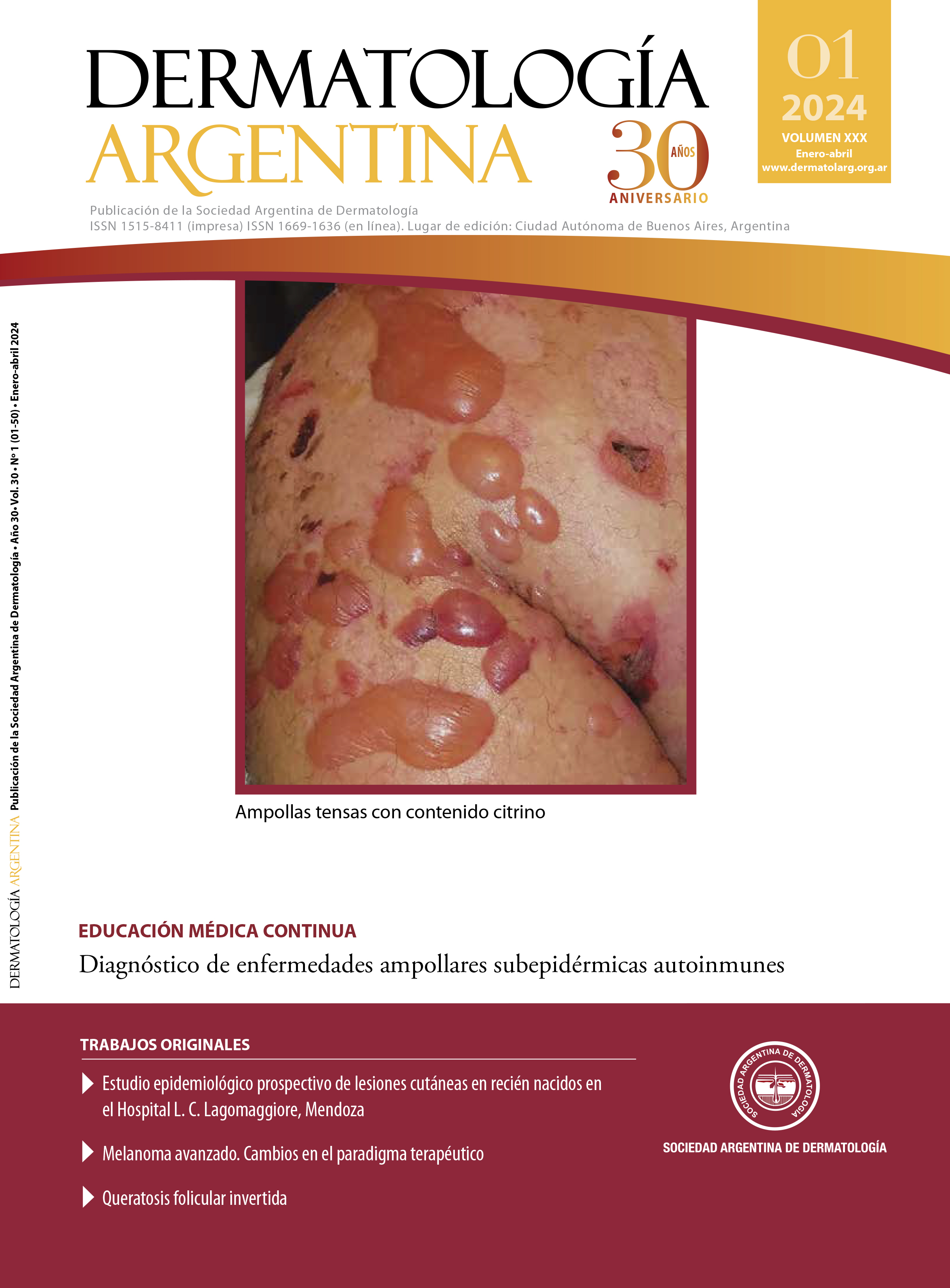Causes and clinical presentation of drug-induced dermatomyositis. Systematic review
DOI:
https://doi.org/10.47196/da.v30i1.2536Abstract
A search was carried out in Pubmed, and articles with cases that met the Naranjo scale for adverse drug reactions were analyzed and selected. Data were obtained from 165 patients.
Drug-induced dermatomyositis (DM) presents with photodistributed erythematous plaques, periorbital erythema, Gottron's sign, and papules, similar to idiopathic DM.
In this review, the most frequent associated drug was hydroxyurea (30.3%), followed by check-point inhibitors (16.4%), statins (13.3%), penicillamine (6.1%) and anti-TNFα (6.1%).
Eighty-five patients (51.6%) presented with cancer (chronic myeloid leukemia, melanoma, breast cancer and polycythemia vera), while another 15 had a history of rheumatological diseases (rheumatoid arthritis, DM and psoriasis).
There was an average of 60 days from the start of the drug and the manifestation of DM.
Skin biopsy was performed in 58 patients (35.2%) and showed interphase vacuolar changes and mucin deposits.
Regarding autoantibodies, the most frequent were FAN, anti-TIF-1γ, and the least frequent were anti-jo-1, anti-Mi-2, anti-Ro and other autoantibodies.
Seventy-two patients (43.6%) presented muscle weakness. Electromyography and magnetic resonance imaging showed myopathy in more than 80% of these patients.
Pulmonary involvement was investigated in few cases with only 6 patients with CT scan with interstitial pattern and one patient with altered functional tests. The authors highlight the lower respiratory involvement compared to the 42% to 53% reported for idiopathic DM.
Finally, the authors mention bisphosphonates and NSAIDs as other triggering drugs, and highlight the importance of having a low threshold of suspicion of drug-induced DM in patients who receive any of the aforementioned medications and present lesions in photoexposed areas and/or or muscle weakness.
References
I. Caravan S, López CM, Yeh JE. Causes and clinical presentation of drug-induced dermatomyositis. A systematic review. JAMA Dermatol. 2024;160: 210-217.
Downloads
Published
Issue
Section
License
Copyright (c) 2024 on behalf of the authors. Reproduction rights: Argentine Dermatology Society

This work is licensed under a Creative Commons Attribution-NonCommercial-NoDerivatives 4.0 International License.
El/los autor/es tranfieren todos los derechos de autor del manuscrito arriba mencionado a Dermatología Argentina en el caso de que el trabajo sea publicado. El/los autor/es declaran que el artículo es original, que no infringe ningún derecho de propiedad intelectual u otros derechos de terceros, que no se encuentra bajo consideración de otra revista y que no ha sido previamente publicado.
Le solicitamos haga click aquí para imprimir, firmar y enviar por correo postal la transferencia de los derechos de autor












